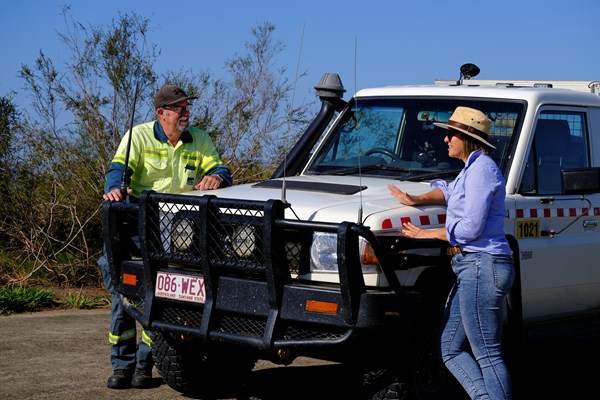We like to think we’re part of the community, too
 Our plantation forests are an important part of the social, environmental and economic fabric of neighbouring local communities. About two thirds of our employees work from our field offices and live locally, along with many of our contractors’ and customers’ employees, supporting local and regional economies.
Our plantation forests are an important part of the social, environmental and economic fabric of neighbouring local communities. About two thirds of our employees work from our field offices and live locally, along with many of our contractors’ and customers’ employees, supporting local and regional economies.
Our plantation forests are also an integral part of the landscape. They provide important green space that is highly valued by neighbours, local communities and forest visitors. Within this landscape, we help protect sites of cultural significance and areas of high conservation value, and our native forest buffers provide important habitat for wildlife and waterway protection.
Other ways we support neighbouring communities includes:
- allowing lawful recreation access throughout most of our plantation forests
- maintaining thousands of kilometres of publicly accessible road networks
- issuing permits for local and regionally significant events
- hosting Clean Up Australia events
- donating equipment to rural fire brigades
- hosting field trips for teachers and students
- participating in local fundraising drives.
Read more about some of our projects with community partners that benefit neighbours and nearby communities.
Minimising impacts
We understand the way we manage our plantation forests can affect our neighbours and their communities and we work hard to reduce the impact of forest operations, harvesting and haulage. We do this through carefully considered and often collaborative planning; fire protection; environmental, weed and pest management; and how we manage access, recreation and cultural values.
To ensure our efforts really make a difference at a local level, we work closely with:
- councils on a range of land management activities
- groups like Landcare or Healthy Land & Water on environmental projects
- the Rural Fire Service on fire protection issues and cooperative burning programs
- neighbouring property owners for collaborative fire, weed and pest control
- recreation groups to help promote responsible recreation
- local police to help keep our plantations safe for everyone.
We also recognise that people want to be informed about decisions and activities that may affect them. We do this through genuine, proactive community engagement and by providing a systematic and objective method for responding to and resolving concerns.
Community engagement
 Every day, our people actively engage with and listen to our neighbours, communities and other stakeholders affected by our activities to build and maintain positive and trusted relationships.
Every day, our people actively engage with and listen to our neighbours, communities and other stakeholders affected by our activities to build and maintain positive and trusted relationships.
Focused on mutual understanding and respect, some of our proactive engagement activities include:
- postal notifications or letters to alert communities about an upcoming event or activity with direct contact details if more information is required
- ‘over the fence’ conversations with neighbours
- one-on-one meetings when there are particular concerns
- drop-in sessions for in-depth discussions before significant or new activities
- electronic invitations to comment on relevant plans
- community group presentations
- guided workshops to generate ideas to manage access issues
- community reference groups to gain representative insight, understanding and recommendations to address complex public problems
We obtain valuable insights that assist our planning and decision making through these engagements. We also learn what is important and of interest to our neighbours and community stakeholders.
Register as a stakeholder
If you would like to register as a stakeholder and be kept up-to-date about matters that interest you, please use the Contact Us form. Select ‘Register as a stakeholder’ from the subject drop-down and then provide your contact details, including postal and residential address, phone number and email, along with your field of interest, and we’ll stay in touch on matters that match your interest for your local area.
Complaints
We recognise that sometimes our engagement could have been more effective or we may have failed to address a matter to your satisfaction. In these circumstances, please refer to our Complaints and Disputes standard, which outlines mechanisms for responding to and resolving complaints and disputes quickly, fairly, efficiently and courteously.
This document explains how to make a formal complaint and mitigating actions while the complaint is being resolved. It also describes when the procedures don’t apply, including when a complaint arises from unlawful or authorised behaviour by the person making the complaint.
